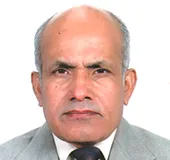
After India released its new map following the formation of two new Union Territories, Jammu and Kashmir, and Ladakh, the issue of Kalapani has become a fresh source of tension between Nepal and India. Kalapani lies at a strategic tri-junction point in Nepal’s north-west corner and it has almost the same strategic importance as Doklam that lies at the tri-junction point between Bhutan, India and China. While the Indian map depicts Kalapani in the Indian side of its border Pithoragarh district of Uttarakhand state; Nepal, on the other hand, claims this area as its part.
However, Kalapani is not a new issue between Nepal and India. The Nepalese side has been raising Kalapani issue with India on different occasions after 1990, but it remained unsettled.
In Nepal, it is said that India placed its security forces in Kalapani due to its strategic importance as far back as in 1962 when India and China fought with each other. Often, points are raised that the Nepal government collected land revenue from the people in this region until 1961. Additionally, it is also added that the people in this region voted in the first general elections of Nepal that were conducted in 1959.
In view of the sensitivity of Kalapani issue, all major political parties of Nepal, including the ruling Nepal Communist Party and the Nepali Congress have exhibited solidarity in opposing India on this issue. So much so that even certain Madhesh-based leaders also echoed the same tone.
For quite some time, the Nepalese Prime Minister Khadga Prasad Sharma Oli maintained silence on Kalapani issue, but later one he also became vocal. In an unambiguous tone, he asked India to recall its troops from Kalapani area. In his effort to project himself more nationalist, former Prime Minister Sher Bahadur Deuba strongly criticized Indian claim on Kalapai and said that India was treating Nepal like Pakistan.
On the other hand, the Ministry of External Affairs of India clarified that India made no change in its map whatsoever and that the Kalapani area was within the Indian side of the border. In this context, Raveesh Kumar, spokesperson of Ministry of External Affairs on November 7 stated that the map in which Kalapani was projected as part of India was accurate and that it was a sovereign territory of his country. He also emphasized the need for both Nepal and India to guard against the vested interests who wanted to creature rupture in relations between the two friendly countries. Later on, India’s Uttarakhand Chief Minister Trivendra Singh Rawat claimed that Kalapani was part of India. But the Nepalese Foreign Ministry did not agree to the Indian stand on Kalapani.
Street protests by the students and youth wings of ruling and opposition political parties against India in regard to Kalapani issue is continuing. But its magnitude has somewhat waned during the recent period. As a mark of protest, the effigy of Indian Prime Minister Narendra Modi was burnt at a few places in Nepal. Along with this, even the effigy of Nepalese Prime Minister KP Sharma Oli was burnt on the ground that he did not do enough to safeguard the country’s interests. Some of the Nepalese diasporas also opposed Indian stand on Kalapani before the Indian diplomatic mission in foreign countries.
Surprisingly, China also came into the picture at a time opposition to India gained momentum. In certain districts, people burnt the effigy of Chinese President Xi Jinping against the Chinese encroachment of Nepalese territory. In certain quarters, China was also charged to have annexed part of Nepalese territory.
If history is any testimony, Nepal’s boundary extended far beyond the present one some two hundred years ago before the war between Nepal and the East India Company in 1814. During that war, the Company annexed all the land from Nepal beyond the Mahakali river in the west and the Mechi river in the east. Additionally, certain low land Nepal’s Terai region was also annexed.
Two years later in 1816 during the Treaty of Sugauli, the British East India Company returned the low land of the Terai to Nepal, but it took away all the land of this country both west of the Mahakali river and east of the Mechi river. Ever since then the Mahakali river in the west and the Mechi river in the east serve as the boundary between Nepal and India.
In certain corners, views have been expressed that Nepal should internationalise the Kalapani issue if it is not settled at the bilateral level. However, both Nepal and India have recently agreed to resolve the issue through secretary-level talk between the two countries. A senior leader of ruling Nepal Communist Party, Pushpa Kamal Dahal, is in favour of resolving the Kalapani issue through political and diplomatic channels as internationalization of the issue would only help to complicate the matter.
There was also media report that Nepal government wanted to send former Prime Minister Madhab Kumar Nepal along with Narayan Kaji Shrestha to India to talk to the Indian side on the Kalapani issue. But at least for the time being, this initiative seems to have frozen.
Considering the geopolitical realities, Nepal needs to settle the Kalapani issue with India through dialogue for which Nepal has rightly proposed talks between the two countries at the secretary level. In view of the fact that Nepal has already resolved 98 per cent of its boundary related issues with India, there is no reason why the remaining two per cent of the boundary issues would not get resolved through diplomatic channels. Meddling into this affair by any third party would only complicate the issue. Nepal at the present juncture needs to show its diplomatic skills in a way that it is able to address the Kalapani issue without disturbing its age-old social, economic and political relations with India which is so vital for us.
The views expressed above belong to the author(s). ORF research and analyses now available on Telegram! Click here to access our curated content — blogs, longforms and interviews.




 PREV
PREV


